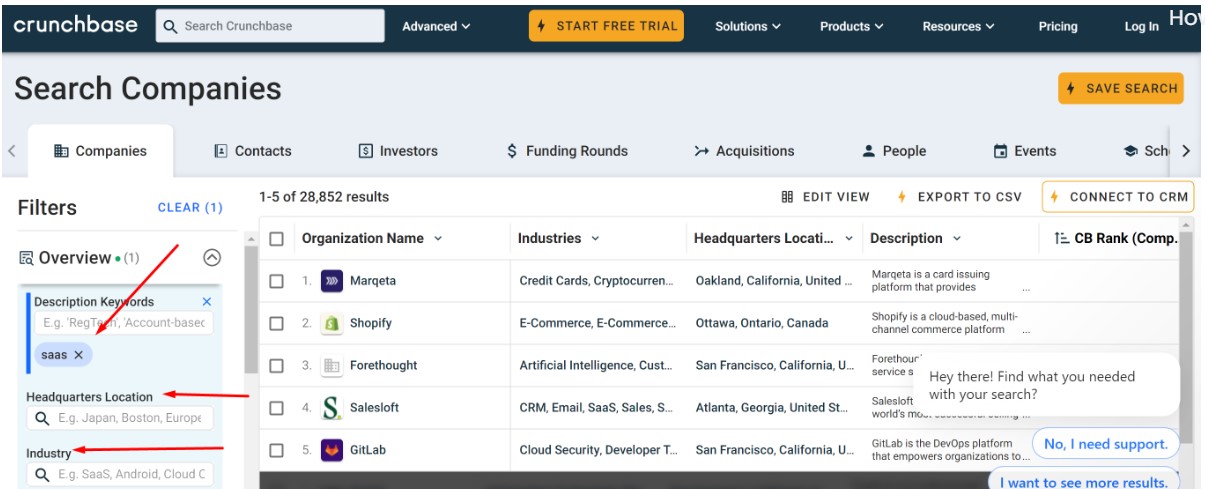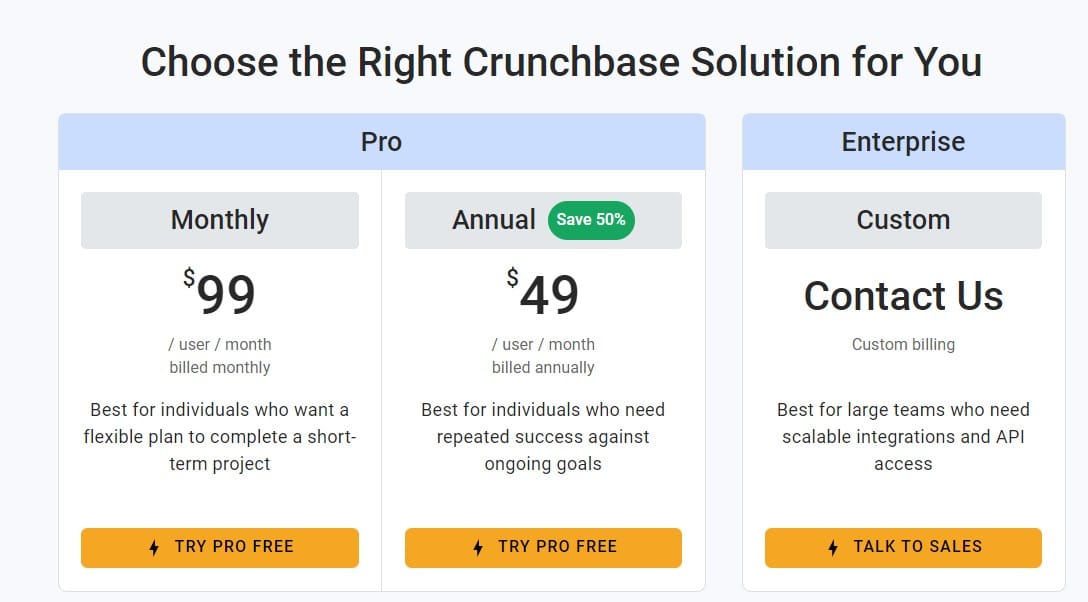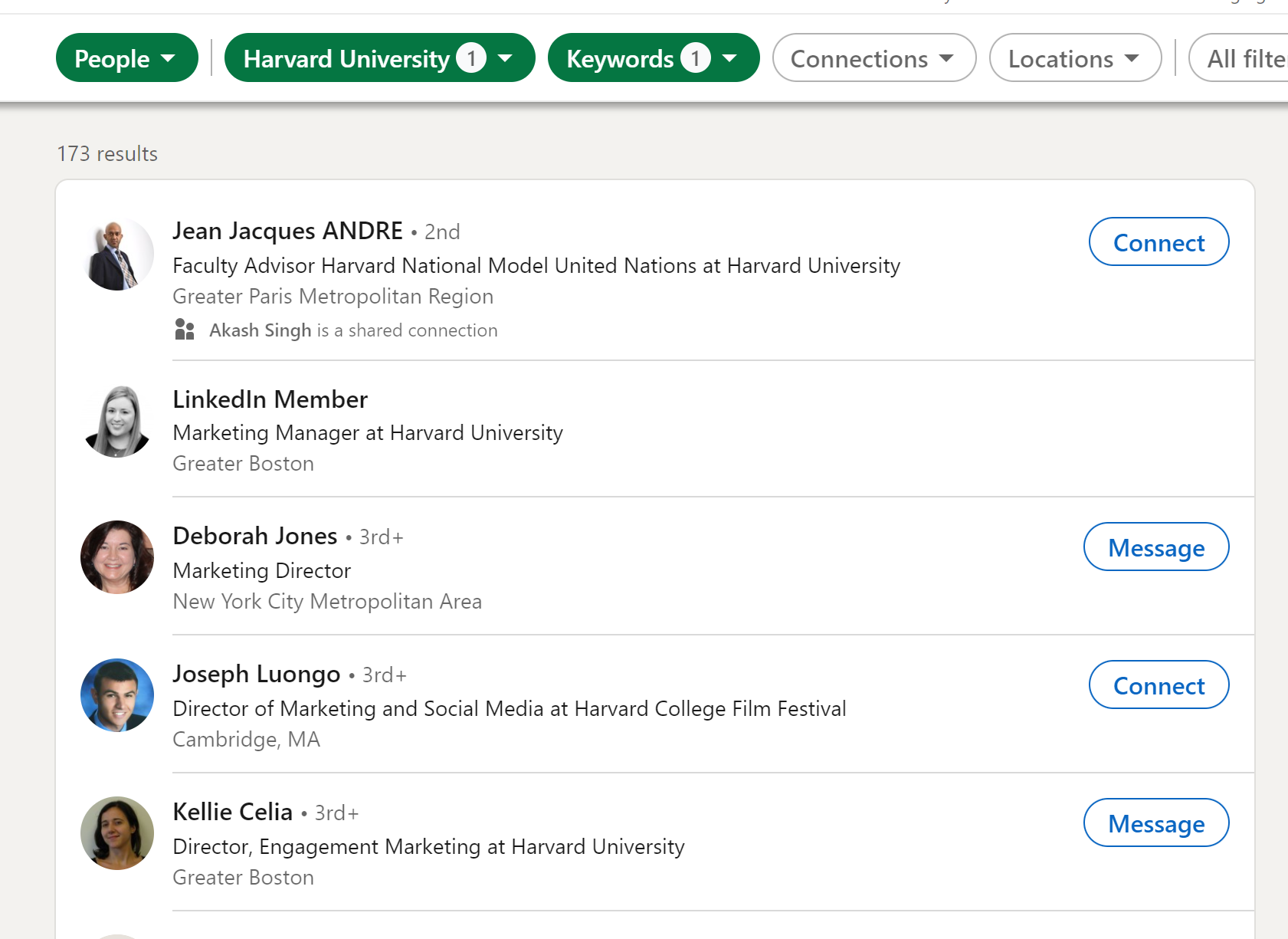As a B2B startup, you don’t want to spend a ton of money on just any kind of marketing.
Effective lead generation for startups should be strategic and resourceful to maximize ROI.
Initially, you might just have a small budget for bringing in new clients, therefore you need to choose lead generation methods that will bring a greater ROI relatively quickly.
Or maybe you’re wondering how to get your first few customers in your sales pipeline.
If this sounds like you, keep reading.
This article will discuss what has worked for various startups in the B2B space that have generated qualified leads efficiently.
(Depending on your budget, you might want to hire a LinkedIn lead generation agency like SalesBread. We will help you build an ultra-refined list of your ideal target audience and get you your first qualified leads. Or hop on a free 15-minute strategy session with the CEO of SalesBread, Jack Reamer.)
Consider this first for the best chance of lead gen success
As a startup, it’s important to focus on learning quickly.
From past experience, we have seen that some startups don’t have a vetted process initially.
Some might not even know who their ideal target audience is at first.
And that’s ok.
Learning who to target can take some time.
Yes, some startups might have a handful of customers, but we suggest testing at least three segments.
The reason for this is so that not all your eggs are in one basket.
At the outset, you might not have much data on whom to reach out to.
We, therefore, suggest looking at who’s paid you within the past 6 months. Who are your BUYING customers?
Even if it’s only a small number of buyers.
Why?
Because this will help you see who good customers are for you, and you can then build a list of look-alike customers, by searching for patterns.
For example:
-
Are all your buyers in a certain geographic location?
-
Have they all acquired a certain amount of funding?
-
Do they perhaps use the same CRM tool?
-
Do they have a similar number of employees? For example, 10-50?
-
What similarities do these customers have?
-
What kind of buyers are these?
-
Are they all in a specific industry?
-
What is the size of their business?
Targeting and list building needs to go deeper than just saying “I want buyers in the healthcare space.”
Startups should ask themselves:
A.) What kind of health care company? (e.g. Health Insurance? Hospital or Clinic? Non-Profit)
B.) What’s the size of the company? (250 beds+? Top 300 University-affiliated hospitals in the U.S.? 5,000 employees? 40 Billion in Annual Revenue?)
C.) What services do they offer? (Outpatient? Emergency?)
D.) What’s their location? (U.S. and Europe? 350 miles from Newark, NJ?)
E.) What departments/employees do they currently have/not have on payroll? (Marketing, Social Media , CNO?)
By doing this, you will eventually figure out who your ideal buying customer is.
Watch this video to see how we find the right people to reach out to:
Once you figure out who to go after, you can use the following methods to generate leads.
1. Partnership Campaigns
Partnerships are also an excellent start for generating leads. For example, if a startup had to connect with a company that offers a complementary service to the same group of buyers, then reaching out to them would be a great idea.
One partnership could land them several deals in the beginning.
Partner outreach is an excellent way to get new paying customers fast.
How would you do this?
The first thing you would need to do in order to start a partnership is to find companies that target the same group of buyers, but who don’t compete with you for sales.
For example, let’s say you offer a bookkeeping tool for small businesses. Instead of just reaching out to small businesses, reach out to CPA firms to see if they would recommend your tool to some of their partners.
You could mention how your tools can make their work easier and faster.
Remember, with a partnership campaign, you might not be directly reaching out to the end-user, but they can be incentivized to sell your product to your ideal buyer.
Below is an example of how we set up a partnership campaign for MDxBlocks, a company that provides blockchain development solutions.
Jack is very knowledgeable about breaking through the fog and getting the right connections. We were impressed with his promise of 1 lead a day, and they overdid it and generated 88 leads in 7 weeks. Way beyond exceptions I had for a lead generation agency. I would recommend their service to any company that wants to improve the number of qualified sales leads fast.
MDx came to us and told us that they work with a couple of really big IT consulting companies, and these companies refer work to them whenever they are helping a company out with blockchain.
Therefore, what they wanted SalesBread to do was find more partners that would lead to repeat referrals for their business.
SalesBread then set up a partnership campaign and went after the top 1000 consulting companies in the U.S. and Canada.
Our approach was simple:
-
First, find the correct companies.
-
Next, find the right people at those companies to connect with.
-
Then, send them connection requests on LinkedIn.
-
And finally, send them messages to set up appointments with them for MDxBlocks.
See our metrics below:
Prospects
Connected
Qualified leads
%
Connection acceptance rate
%
Lead Rate
We managed to generate 1.5 high-quality leads per day within 12 weeks through a partnership campaign for MDx.
For more info on how we built their lead gen campaign step by step, read this article.
2. Use LinkedIn Outreach Lead generation strategies
If you have been reading our articles, you will know that Linkedin outreach is what we specialize in for effective lead generation .
As a startup, LinkedIn could be a great first option to find more leads.
For example, it’s more affordable than hiring a content marketing agency, plus if you know how to use LinkedIn the right way, you could receive your first few leads within a few hours after launching your campaign.
Before you begin, you might want to invest in some tools such as LinkedIn Sales Navigator, Clutch, and Crunchbase.
This will make the process much easier and allow for ultra-targeting.
LinkedIn Sales Navigator
This tool offers various features (depending on the package you choose) such as:
-
Advanced lead and company search
-
Alerts on your saved leads and accounts
-
Customized lists
-
Content sharing and engagement tracking
-
CRM synchronization
-
Inmail
-
Access to LinkedIn subscriptions
You can expect to pay about $99.00 per month.


Crunchbase
Crunchbase is another prospecting tool that we have found very helpful. It allows you to find data on prospects with:
-
Advanced filters
-
Analysis tools and
-
Company alerts.
What we like about Crunchbase
CrunchBase is the best prospecting tool, in our opinion, for finding companies in a particular industry.

Contact info is also available, which is helpful.
You can choose the following packages:

Our LinkedIn Lead Generation Strategy
Let’s say that your startup sells video production marketing services to businesses.
Perhaps you would like to go after universities.
(We actually did a similar campaign for a company called Local Eyes)
This is our LinkedIn strategy in a nutshell:

Step 1: Build a super targeted list (According to the example)
The first thing you would need to do is build a list of the correct marketing people at the top 500 universities in the USA.
How could you rank these universities? You could just go to college rankings on Google and research these resources to find the top 500.
(As we mentioned at the outset of this article, you will need to have some data to know whom to target before you begin your outreach.)
Use various tools to build your list of prospects. When it comes to list building, think outside the box. You don’t just have to use one tool.
Also, ask yourself what your buyers have in common and build segments according to that.
Step 2: Filter through your second-degree network and recently posted on LinkedIn
Next, once you have your list of universities you would then need to find each of their Linkedin URLS and plug it into Linkedin Sales Navigator and find the right marketers to reach out to at these companies.
See screenshots below:


Because there would be more than one marketer at these universities, you will then need to filter this list again by your second-degree network, and recently posted on Linkedin .
This would then show you which marketers are active on the platform.
You want to reach out to people who are active on LinkedIn.
Why?
Because there is no point in sending messages to people who never use the platform.
This refining process can take up to a week before you even launch your campaign.
And that’s okay.
It would be better to have a list of 70 ultra-refined prospects than thousands who are a bad fit.
Step 3: Write personalized messages
In order to write personalized messages, you have to research your prospects. You would do this by checking out their LinkedIn profile, or by Googling their names.
We use a method called CCQ in our marketing strategy, which helps us write thousands of personalized messages.
It stands for:
-
Compliment
-
Commonality
-
Questions
This means that you should look for a compliment, a commonality, or a question in the prospect’s profiles to use in your messaging.
You can then use this to connect with your prospects via LinkedIn.
Here are some examples:
-
“Hi (name), loved your piece of content on saas marketing. Would love to connect and hear more. (Your name)
-
(Name) I see we share connections in the XYZ space and would love to connect. If I can introduce you to anyone at my company, I’d be happy to.? (Your name)”
-
Hi (Name), I’d like to add you to my network. We are currently looking for tele-calling freelancers for business development based out of the US. Would love to connect and discuss more.
Step 4: Follow up with a clear CTA
Lastly, follow up with your prospects. We suggest using the Fibonacci sequence for following up, as this allows for the best cadence.
When it comes to replying, don’t be a sleazy salesman. Rather, just start conversations and sell in a sales call.
This is why we always ask for a meeting in our follow-ups.
Here are some CTA ’s you can use
-
Would you have 10-15 minutes for a call on {{=bday+3}} at 11 am to discuss further?
-
Are you available to talk later this week? Here is a link to my calendar:
-
Can we get on a call this {{bday+2}} 10 AM to discuss how we can help you solve [MAIN PROBLEM]?
-
Do you have a quick 10 min to chat?
-
Could I grab 10 min of your time to chat?
-
Can you or someone on your team jump on a quick 14-minute call this week to explore?
-
Would you have 20 minutes available this week or next for a personalized demo?
-
Would you have 20 minutes available this week or next?
Feel free to hop on a free 15-minute consultation call with SalesBread to see how we can help your company find new leads within the first 48 hours after launching your campaign.
3. Use cold email to get more prospects
At SalesBread, we also make use of cold email outreach to reach out to potential customers for our clients. We believe in a multi-channel approach to generating leads.
The great thing about email outreach is that you can use the same principles as Linkedin lead generation for finding the right people for your business.
In the same way, you will need to build a targeted list of prospects (remember to look for patterns amongst your current buying customers).
You will then need to find the contact information of these prospects.
How do you find their email addresses?
Well, you could have a look at Crunchbase, LinkedIn, or even Apollo.io.
You can then run the email addresses through a program called NeverBounce. Neverbounce allows you to verify the email addresses of your prospects; this means that you can throw out all unverified emails.
Next, you will have to research each prospect again in order to write personalized emails.
Remember the CCQ method. (Compliment, commonalities, questions.)
If the prospect doesn’t reply, follow up at least 3 times.
PRO TIPS:
-
Run some A/B tests. This will help you see which copy works best for the prospects. This could be as simple as changing the subject line or the value add.
-
It’s also important to only send a few emails a day. This ensures that you don’t run through your list too quickly, but also so that your emails don’t end up in the spam folder.
-
Don’t use automation for every single email. A personalized touch encourages readers to engage with you. An example is a reader replying to your email and asking a question, only to have an automation tool reply back with some generic message. This actually happened to us at Salesbread and put us off the product.
4. Events And Trade Shows
Now that most countries are slowly but surely allowing more freedom since Covid seems to be subsiding, there will be more in-person events and trade shows for startups to attend.
If you are in the USA, take a look here for some up-and-coming expos that you can attend and be part of.
These expos are great for networking and getting noticed. There are usually quite a few influencers at these events, looking to gain information on up-and-coming businesses.
You can use this opportunity to start conversations and get people excited about your products or services.
Trade shows also allow you to take a look at the competition and see where you can improve and how they position their products.
Being at events, where your competitors are, also allows buyers to view you as a viable alternative.
Another great thing about being at these expos is that CEOs, C-suite executives, investors, and customers are at these events.
You never know who you might meet and just one great contact could be all you need for meeting new customers.
5. Social Media Marketing
According to Ruler Analytics, social media conversion rates can be positive depending on which industry you are in.
This was what they found:

“ Over the years, social media has proven to be a key channel for brand awareness and often plays a meaningful role much earlier on in the customer journey.
Nevertheless, when used correctly, social media can have a significant impact on your sales activity.
Firstly, social media allows businesses to build trust and credibility with their audience.
When searching for high-value products and services, such as a medical procedure or a new car, many people enter the customer journey with a lot of caution.
Facebook specifically allows customers to leave feedback on their experiences.
Quite often, buyers will use this insight to establish their positive and negative feelings towards a product or service before making an inquiry.
In fact, about 95% of customers read reviews before making a purchase.” – Ruler Analytics
Social media works well for brand awareness, and it’s not too expensive if you choose to create your own social media pages and use paid ads.
It might be costly if you were to opt for an agency to do your social media marketing.
Take a look at what you can expect to pay below:

6. Search engine optimization, PPC Landing pages, and Content marketing
Digital marketing also works.
Think about it…
When buyers are looking for a service or product the first thing that they normally would do, is Google it.
The only problem, though, is that it can take time for Google to start ranking your website, but if you produce valuable content regularly, this can happen within a few months. Remember to also use SEO best practices.
At SalesBread, our content marketing took some time to kick off (a year in fact), but we are now steadily ranking on page one of Google for many keywords.
Below you can see how our organic traffic has grown over a year, just by posting content regularly and making use of SEO

This has helped us get many page views, but what’s been working to gain higher conversions is quality content.
Most businesses hire a freelancer and tell them to write content. The problem with this though, is that they basically duplicate what’s already on the internet.
The trick is to post content that shows you are the leader in your industry. Don’t just copy what’s already circulating all over the internet.
What about PPC?
PPC can become costly, but according to stats if it’s done correctly 50 % of customers who find your site through PPC are more likely to buy your product or service as opposed to someone who found you organically.
This article from Semrush explains how to use PPC the right way.
Want more business for your startup?
As a startup, you have money options for generating leads.
The main considerations should be:
-
Your budget
-
Your time
-
Your knowledge of your ideal target audience
Depending on these factors, you can choose the best methods to generate leads for your business. Whether it’s inbound or outbound.
Remember, with outbound, you can get immediate results, whereas with inbound, it might take some time.
If you would like a targeted data-driven approach to finding new leads, contact SalesBread.
Read this article to see exactly how we run campaigns, OR book a free 15-minute strategy session below.
